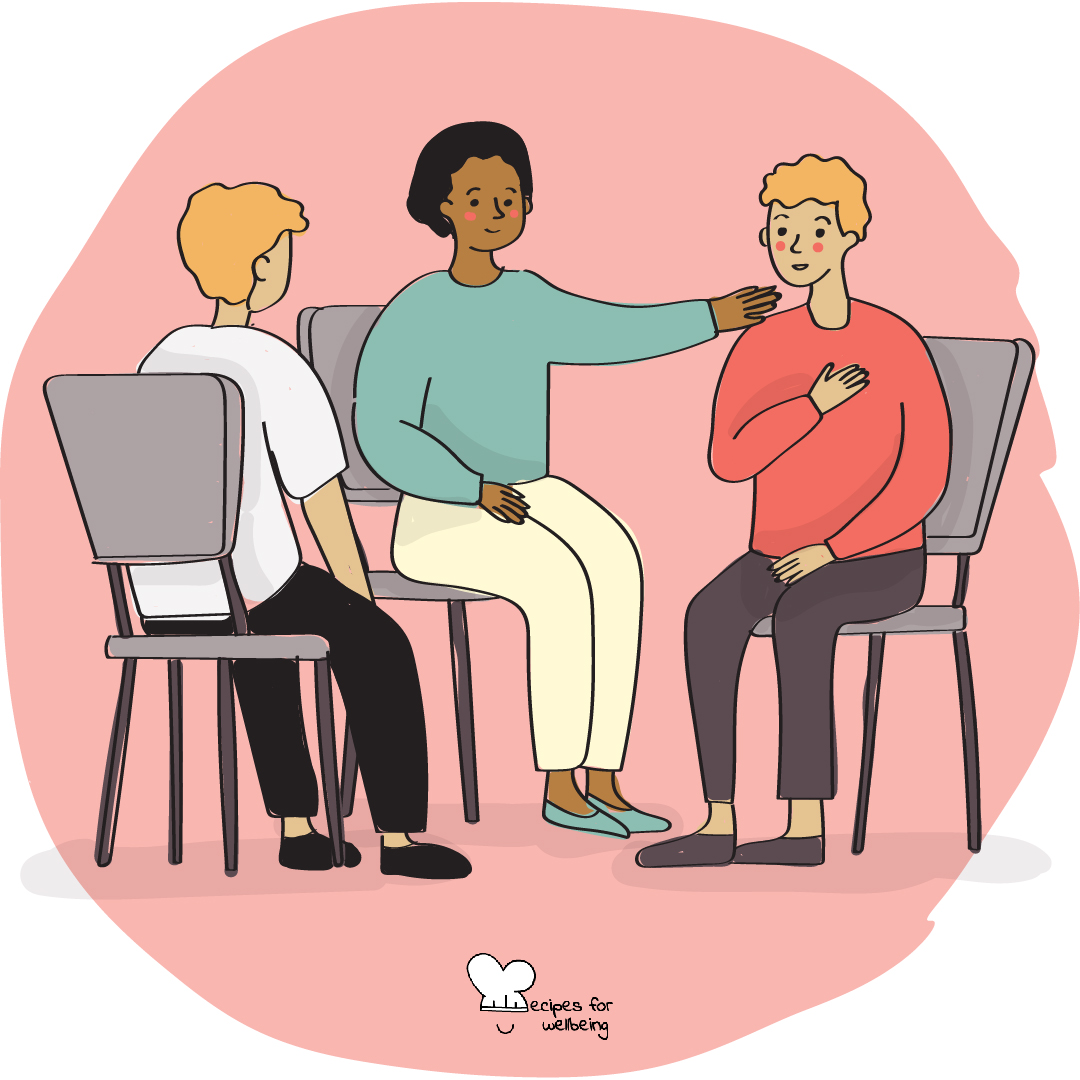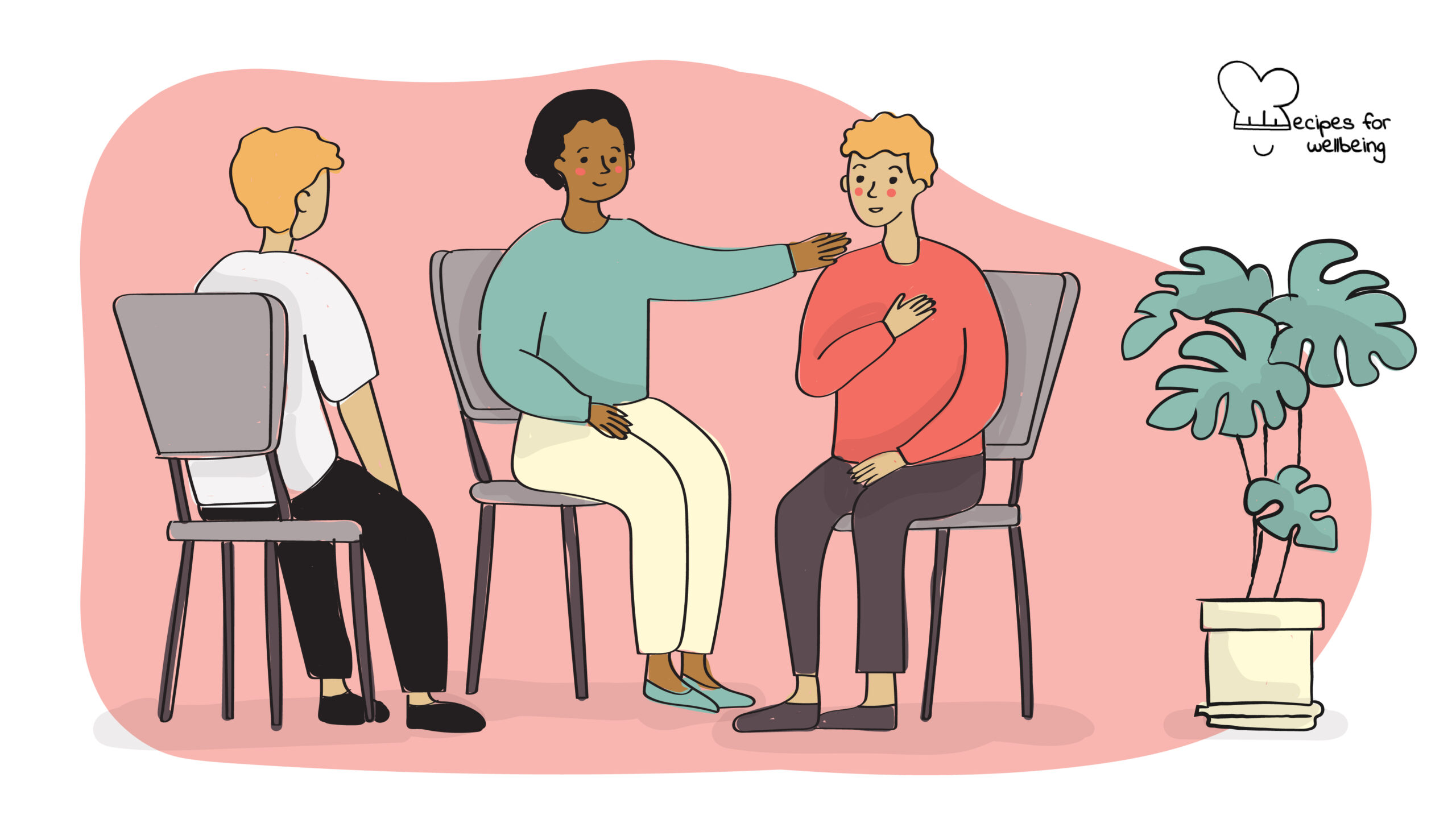
Transforming conflict
Conflict is not good or bad; it’s simply energy. As such, it does not have to be prevented or resolved, but transformed. ―Scilla Elworthy
👥 Serves: 3 people
🎚 Difficulty: Hard
⏳ Total time: 30 minutes
🥣 Ingredients: 1 person with whom you have a conflict, 1 facilitator, “Pioneering the Possible” book by Scilla Elworthy (if you’re curious to find out more about it!)
💪 Nutritional values: Active listening, Empathy, Acceptance, Non-violent communication, Conflict transformation

Transforming conflict
📝 Description
Using the heart to transform conflict into an opportunity.
The following activity has been taken from Scilla Elworthy’s book Pioneering the Possible: Awakened Leadership for a World that Works. The book explores how humans can make the necessary leap in consciousness to address the global crises modern society faces and create a better world for all life.
This exercise will help you use conflict as an opportunity, rather than an energy drain. Conflict is part of life. And so, it is part of our organisations too. However, most people, when faced with a conflict, tend to retreat. Elder Scilla Elworthy suggests that instead of retreating, we should advance in order to transform conflict into an opportunity. After all, conflict is neither good nor bad; it is simply energy. So it is our responsibility to move towards it and transform it into something positive.
In particular, Scilla points out that this exercise enables you to move “from the head (being ‘right’ and having a ‘position’) to the heart (being connected, with the possibility to discover a common interest)”.
To find out more about Scilla’s work, please visit their website: http://www.scillaelworthy.com.
👣 Steps
Step 1 – Gathering
Ask the person with whom you have a conflict if they are willing to sit with you for half an hour and talk in a structured way. Explain that this process will give both parties [person A and person B] an opportunity to express feelings safely, without going into the rights and wrongs of the situation.
Sit opposite each other, preferably with a neutral facilitator, and preferably with some flowers nearby. During this process the facilitator can coach the participants to be more specific and remind them to stick to the first person, to express feelings clearly, and to be more authentic.
Step 2 – Expressing feelings and listening actively (5’)
Person A starts to describe their feelings in the conflict, speaking in the first person and not accusing the other. For example, saying, “When this happens, I feel – sad, angry, frustrated, miserable, fearful”. Person A continues until has said enough. Person B simply gives their full attention and listens, without interrupting.
Step 3 – Repeating (3’)
The facilitator asks Person B to repeat to A what B has heard, as accurately as possible, and to include what they have observed of the feelings behind the words.
Step 4 – Asking for confirmation (2’)
The facilitator asks person A, “Was that correct? Was anything omitted?” Person A can then add anything that was left out.
Step 5 – Swapping roles and repeating (10’)
The facilitator asks to swap roles and do the same with person B speaking and A listening, following steps 2-4.
Step 6 – Expressing needs (2’)
At this point, the facilitator can ask person A to express their needs: “What do you need?” while person B listens to the answer.
Step 7 – Swapping roles and repeating (2’)
The facilitator asks the same question to person B, while person A listens.
Step 8 – Making requests (3’)
Ultimately, the facilitator asks person A, “What do you request B to do or not to do?” Person B can agree or not, and they can set a timeframe, if necessary, by which time person B will do that person A requests.
Step 9 – Swapping roles and repeating (3’)
Swap roles once again. The facilitator asks the same question to person B – to make a request of person A. Person A agrees or not, and they set a timeframe, if necessary, by which time person A will do this.

